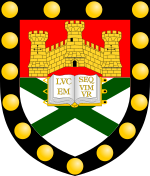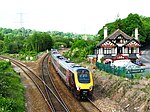Exwick

Exwick is an historic parish and manor in Devon, England, which today is a north-western suburb of the City of Exeter. Its name is derived from the River Exe, which forms its eastern boundary. It is also an Ecclesiastical parish and an electoral ward. Mentioned in the Domesday Book, it was the site of farms, orchards and mills. Exwick meaning farm by the river Exe. Being on the edge of the Exe floodplain, mill industries were important in Exwick. A leat from the Exe was dug before the Doomsday book was compiled. Other industries formerly in the area include clothmaking, aeroparts and baking. Manufacture of wooden flooring continues to this day. There were a number of large houses in the area including Cleve House which became a Guide Dogs for the Blind training centre in the 1950s. Later it became private houses and the site of a new primary school. The Mallet family bought Exwick Mill.Another important family with an Exwick Connection were the Gibbs. Andrew Gibbs from Clyst St Mary in Exeter, following several adventures, was involved in setting up the Antony Gibbs & Sons cloth business in 1778. William Gibbs paid to make Exwick a separate parish from St Thomas and extend the Chapel of ease into the full church of St. Andrews. The area is often used as a location for painters to look back at Exeter, including Frances Towne in 1773 and J. M. W. Turner in 1811.The murder of Kate Bushell, one of Britain's most high-profile unsolved murders, occurred in Exwick in November 1997.
Excerpt from the Wikipedia article Exwick (License: CC BY-SA 3.0, Authors, Images).Exwick
King Edward Street, Exeter Exwick
Geographical coordinates (GPS) Address Nearby Places Show on map
Geographical coordinates (GPS)
| Latitude | Longitude |
|---|---|
| N 50.73786 ° | E -3.54732 ° |
Address
Riverside Freight Yard
King Edward Street
EX4 4NY Exeter, Exwick
England, United Kingdom
Open on Google Maps









